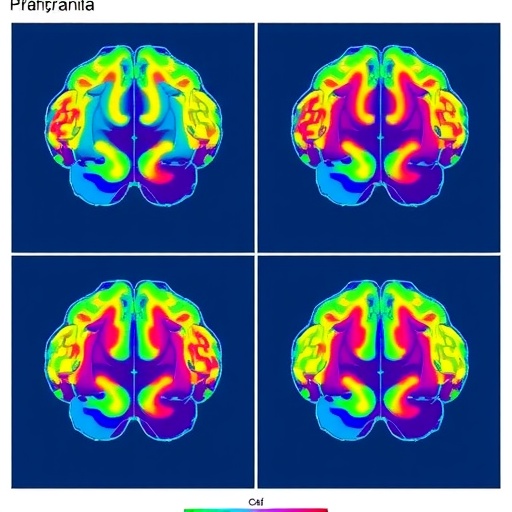Review of imaging studies finds specific brain regions process types of word meanings separately
Rockville, Md. (February 28, 2019)–A new review explores the different areas of the brain that process the meaning of concrete and abstract concepts. The article is published ahead of print in the Journal of Neurophysiology (JNP).
The words that make up our language can be divided into two categories of concepts: concrete and abstract. Concrete words refer to things that exist in reality (e.g., animals, books, food) and that are experienced through the five senses. Abstract words (e.g., love, fear) tend to be more emotionally charged, not experienced through the senses and defined through other associated words rather than physical features. “Although it is clear that different brain areas are involved in semantic processing of abstract and concrete words, it is still a matter of debate which brain areas encode the different types of information underlying the meaning of abstract and concrete words,” wrote Maria Montefinese, PhD, author of the review.
Montefinese analyzed three studies that identified and observed specific regions of the brain that organize abstract and concrete concepts. The volunteers in all of the studies were assigned language-related tasks while undergoing imaging tests of the brain:
* A group of native English speakers completed two tasks involving a set of 40 concrete words. The first task instructed the volunteers to answer questions about the visual aspects of the words (i.e., “is it round?”). The second task required them to answer questions about general, more abstract characteristics of the words, such as “is it living?” The researchers found that the perirhinal cortex, an area of the brain associated with memory and recognition, processed the information from both tasks. However, the parahippocampal cortex, a brain region associated with memory formation, only responded to the second tasks involving non-visual questions.
* In a separate study, native Chinese speakers were asked to judge the familiarity of a series of words. The words represented more than 300 abstract concepts. The results showed that a network of several brain regions, including the inferior frontal gyrus (IFG) and the middle temporal gyrus (MTG), worked together to organize abstract information. The IFG is a brain region associated with language processing. The MTG is a region involved with the retrieval of word meaning.
* In the third study, a group of native Italian speakers were asked to decide whether strings of letters formed real words. One half of the words given were either concrete or abstract words and the other half were made up words. Results showed that the left IFG acts as a “neural crossroads” to differentiate between abstract and concrete words.
“Together, these studies shed new light on how abstract and concrete concepts are represented in the brain [across] different languages,” Montefinese wrote. This research helps identify a “left-lateralized semantic network” that promotes better understanding of word-meaning structure in the brain.
###
Read the full article, “Semantic representation of abstract and concrete words: a mini-review of neural evidence,” published ahead of print in the Journal of Neurophysiology (JNP).
NOTE TO JOURNALISTS: To schedule an interview with a member of the research team, please contact the [email protected]>APS Communications Office or 301-634-7314. Find more research highlights in the APS Press Room.
Physiology is the study of how molecules, cells, tissues and organs function in health and disease. Established in 1887, the American Physiological Society (APS) was the first U.S. society in the biomedical sciences field. The Society represents more than 10,000 members and publishes 15 peer-reviewed journals with a worldwide readership.
Media Contact
Communications Office
[email protected]
http://dx.




